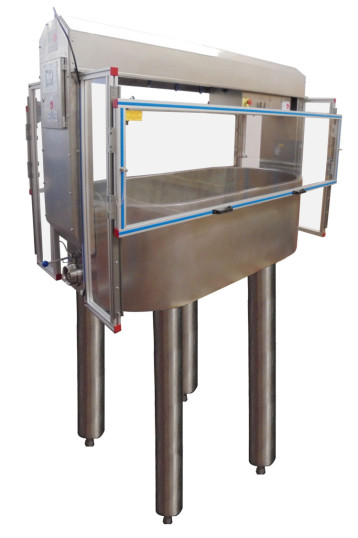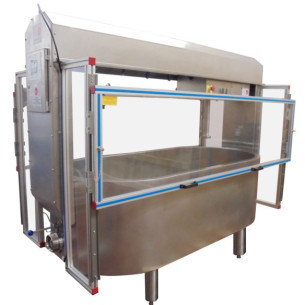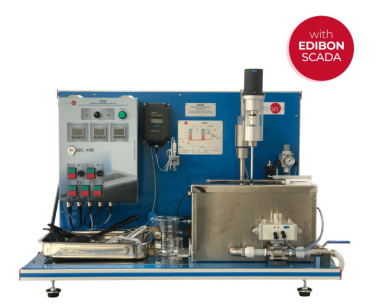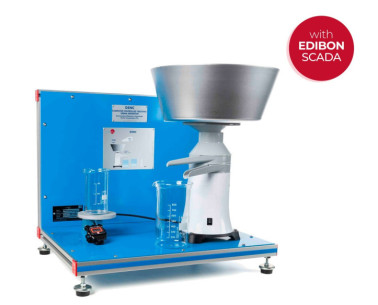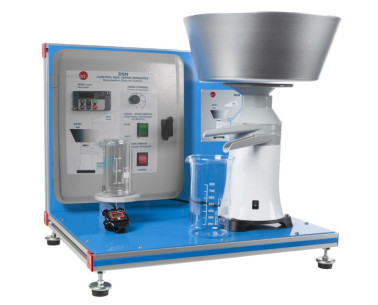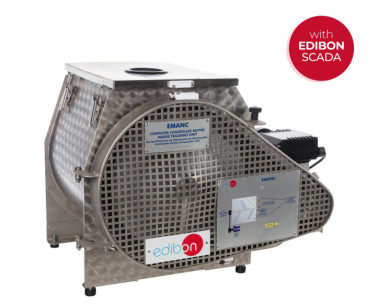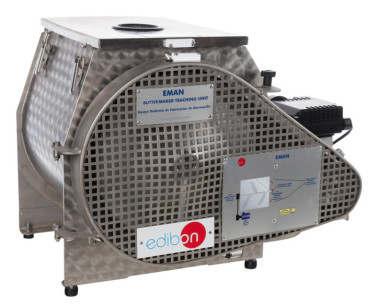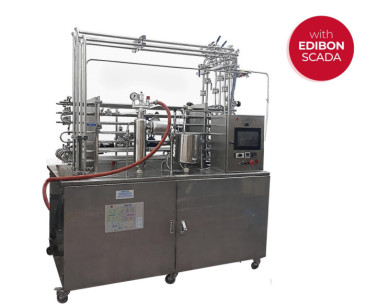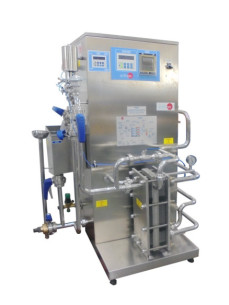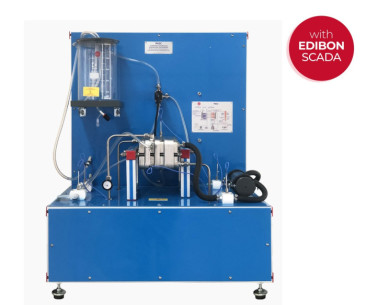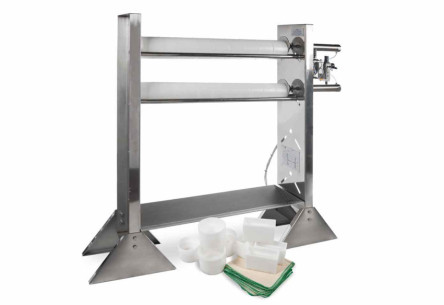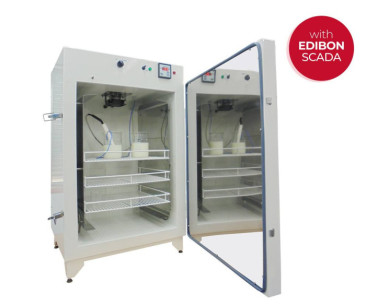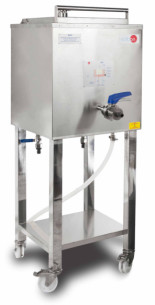The Dutch Vat for Cheese Production (up to 50 l), "DVCP", has a tank with water jacket, coil with inlet and outlet for water from the boiler, jacket water inlet, serum drainage valve and set of accessories for the agitation, cutting and drain of the product.
Pasteurized milk coming from a refrigerated milk tank is poured into the tank of the unit. The milk is heated with a water jacket with a stainless steel coil, using water or steam in a closed circuit.
The equipment includes a bridge with a variator-motor reducer group that allows the displacement of the motor controlled from a control panel, along the equipment in both directions. As a consequence, the milk is stirred and the curd is cut automatically.
Two temperature sensors measure the temperature of the water and the milk. The water is introduced in the jacket through a filling/emptying inlet. This inlet allows, at the same time, the drainage of water from the jacket. The accumulated air and the excess of water in the jacket is removed through the overflow.
Moreover, there is an outlet valve to remove the excess of serum, after the curdling process.Two transparent housings with safety devices protect the students and allow visibility of the practices and components of the unit.
The vat has a cover with a viewer and light to visualize the interior.
The unit includes a set of accessories for stirring, cutting and draining the product. These accessories are: cutting lyres and agitator, prepress and lifting plates that can be attached to the mechanized bridge.
 Preferências de cookies
Preferências de cookies

